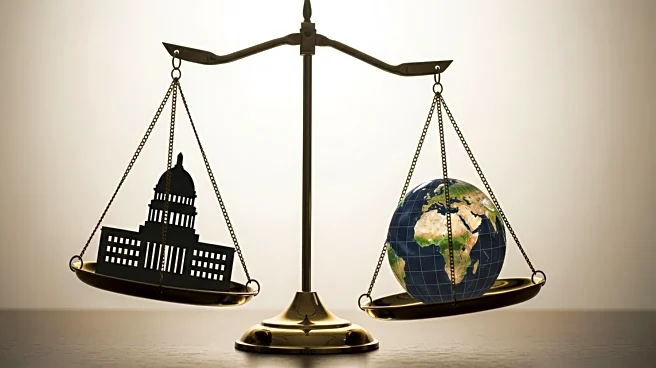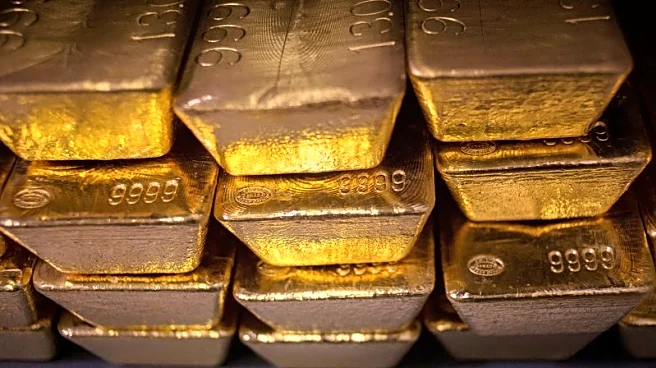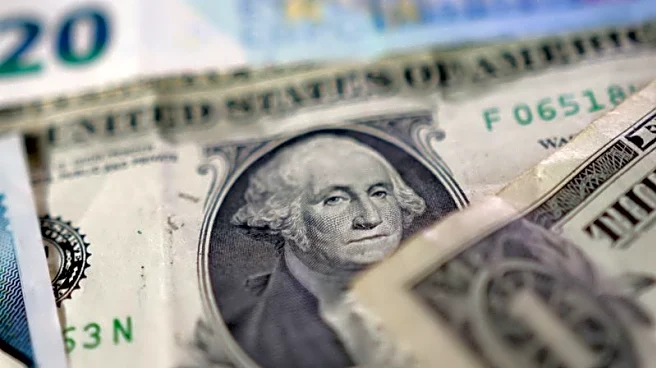What is the story about?
What's Happening?
HSBC has projected that gold prices could exceed $4,000 per ounce in the near term, driven by geopolitical risks, fiscal uncertainties, and concerns over the Federal Reserve's independence. The bank's analysis suggests that ongoing official sector purchases and institutional demand for gold as a diversification tool will continue to support the metal's price. Recently, spot gold reached a record high of $3,896.49, fueled by the uncertainty surrounding a U.S. government shutdown and the anticipation of interest rate cuts. The U.S. Senate is set to vote on competing plans to end the shutdown, which has already disrupted various governmental functions. Additionally, President Trump's attempt to dismiss Fed Governor Lisa Cook has raised fears of political interference in monetary policy, further contributing to market volatility.
Why It's Important?
The potential rise in gold prices reflects broader economic and political tensions that could impact various sectors. For investors, gold remains a preferred asset during periods of uncertainty and low interest rates, offering a hedge against inflation and currency devaluation. The ongoing government shutdown and political maneuvers concerning the Federal Reserve could have significant implications for U.S. economic stability and investor confidence. If the Fed opts for fewer rate cuts than anticipated, it might temper the gold rally, but persistent geopolitical risks and central bank purchases are likely to sustain demand. This scenario underscores the interconnectedness of global financial markets and the influence of U.S. domestic policies on international economic trends.
What's Next?
The outcome of the Senate vote on the government shutdown will be closely watched, as it could either alleviate or exacerbate current market uncertainties. Additionally, any further actions by President Trump regarding the Federal Reserve could prompt reactions from financial markets and policymakers. Investors will also monitor the Fed's interest rate decisions, as deviations from expected cuts could influence gold's trajectory. Looking ahead, central banks' purchasing patterns and geopolitical developments will continue to shape the gold market, with potential long-term shifts in global economic alignments.
AI Generated Content
Do you find this article useful?














